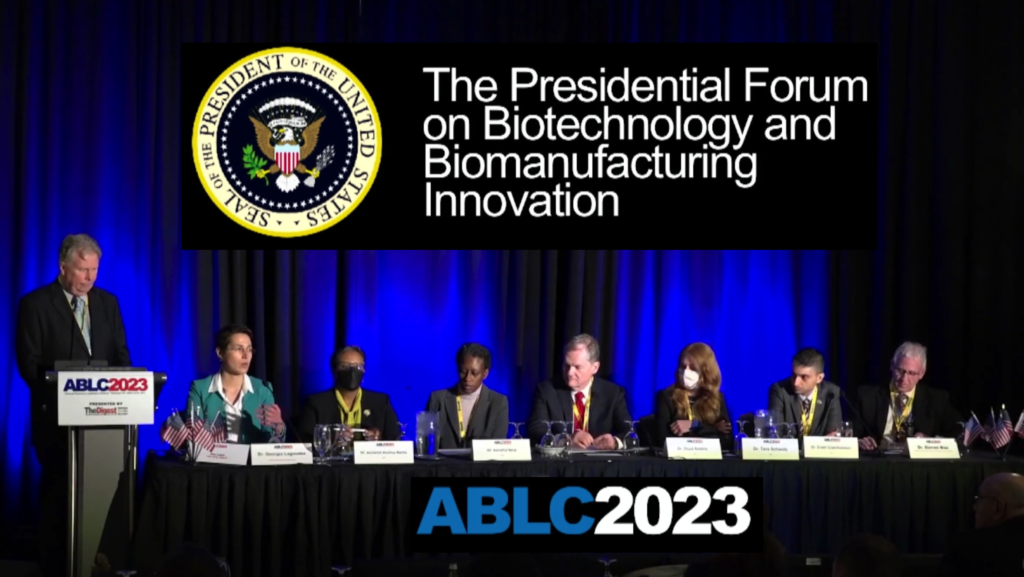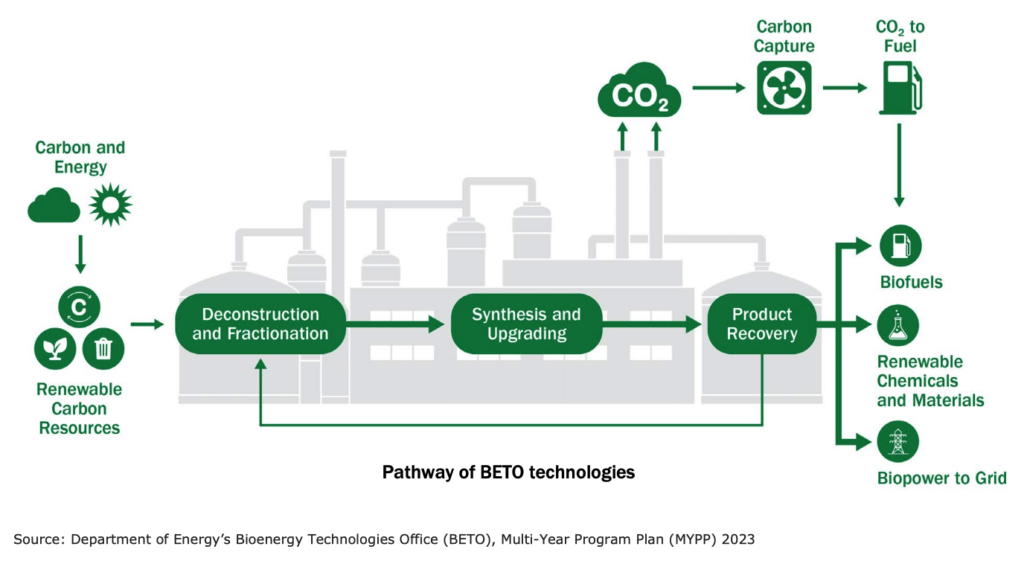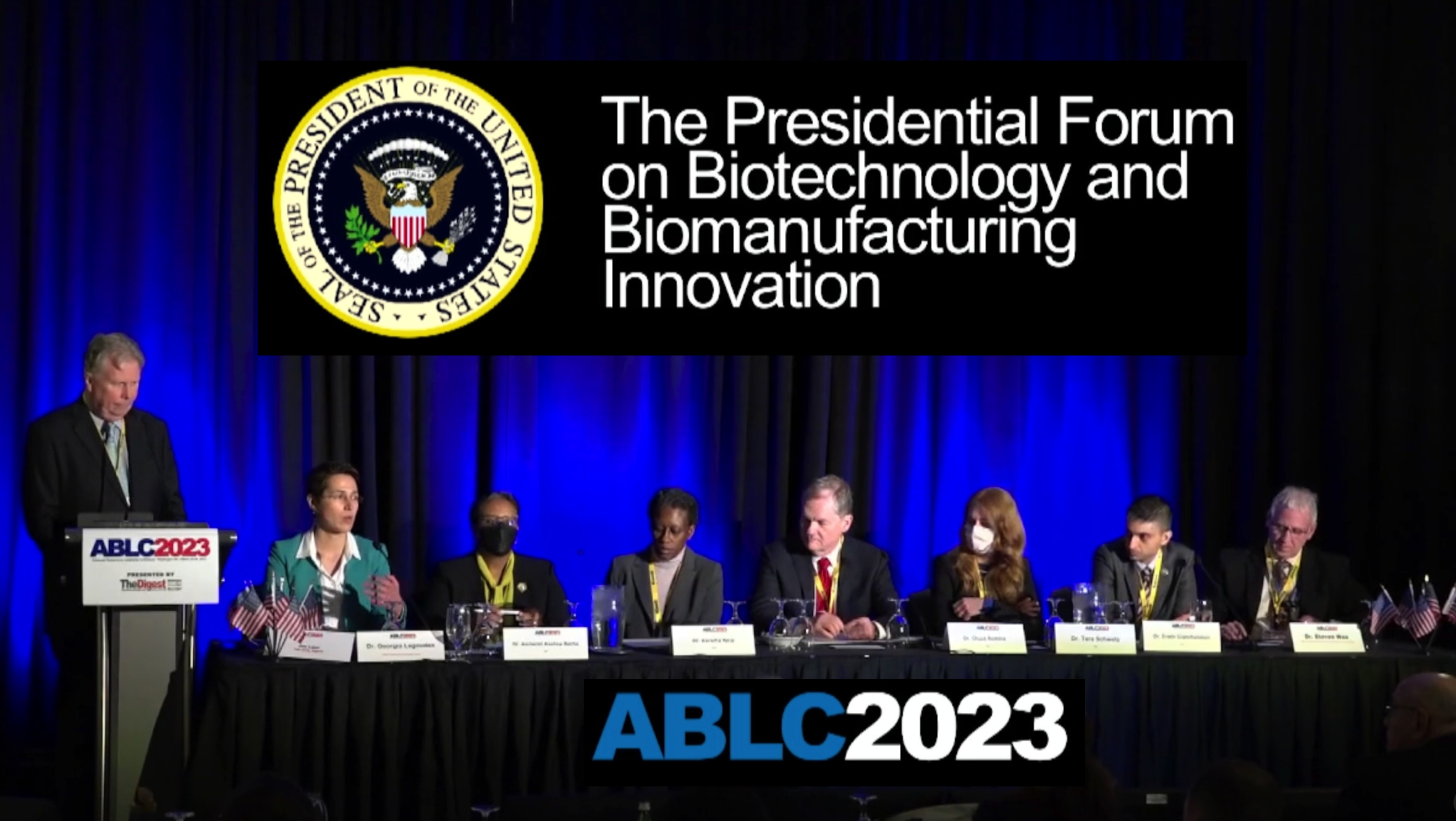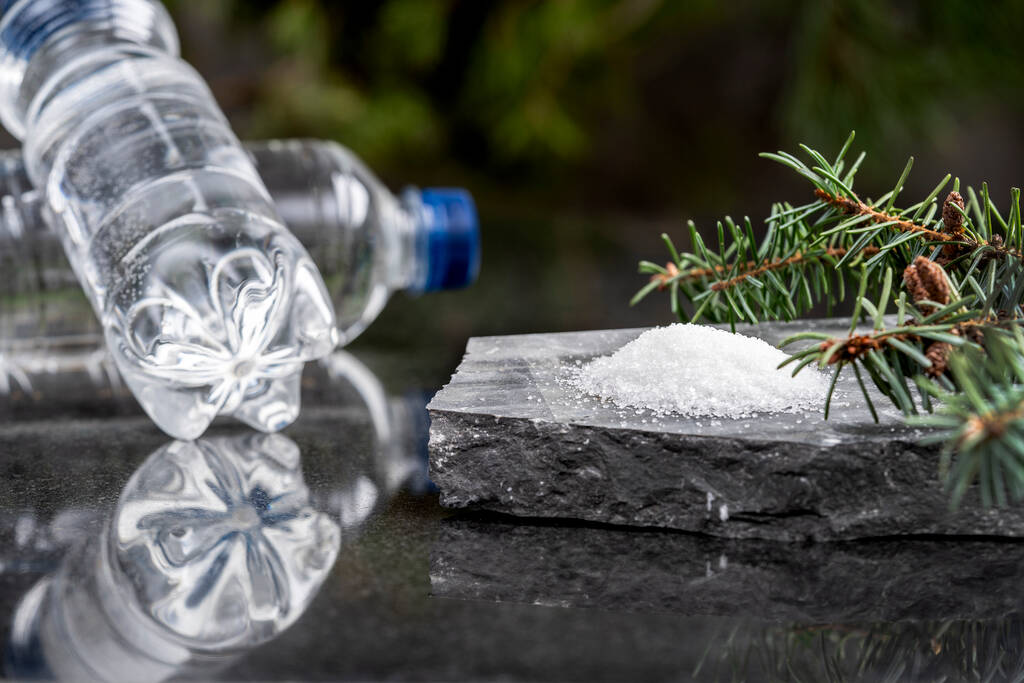
The recently-held Advanced Bioeconomy Leadership Conference (ABLC) held in Washington, DC, on 22-24 March saw the convergence of different US agencies – Department of Energy (DOE), Department of Agriculture (USDA), Department of Commerce, Department of Health and Human Services (HHS) and the National Science Foundation (NSF) – with very bold targets below for the next two decades to help establish R&D priorities to advance the nation’s Bioeconomy. These goals will be grouped into four themes where biotechnology can play a critical role in reducing GHG emissions and removing carbon from the atmosphere.
Theme 1 addresses the need to develop more carbon-neutral transportation and stationary fuels by expanding renewable feedstock availability and producing more sustainable aviation and other strategic fuels. New ways to produce such fuels are needed to shift the United States from fossil-based fuels toward renewable liquid fuels, which will likely still be required by a subset of transportation and other applications currently difficult to electrify.
- Goal 1.1: Expand Feedstock Availability – In 20 years, collect and process 1.2 billion metric tons of conversion-ready, purpose-grown plants and waste-derived feedstocks and utilize >60 million metric tons of exhaust gas CO2 suitable for conversion to fuels and products while minimizing emissions, water use, habitat conversion, and other sustainability challenges.
- Goal 1.2: Produce Sustainable Aviation Fuel (SAF) – In 7 years, produce 3 billion gallons of SAF with at least 50% (stretch 70%) reduction in GHG lifecycle emissions relative to conventional aviation fuels, with production rising to 35 billion gallons in 2050.
- Goal 1.3: Develop Other Strategic Fuels – In 20 years, develop technologies to replace 50% (>15 billion gallons) of maritime fuel, off-road vehicle fuel, and rail fuel with low net GHG emission fuels.
Theme 2 seeks alternative processes to produce chemicals and materials from renewable biomass and intermediate feedstocks by developing low-carbon-intensity product pathways and promoting a circular economy for materials. Achieving these goals will position the United States at the forefront of a vibrant global bioeconomy while producing net-zero or net-negative emissions, reducing the use of and reliance on fossil fuels, and increasing the use of recyclable-by-design chemicals and materials like bio-based products.
- Goal 2.1: Develop Low-Carbon-Intensity Chemicals and Materials – In 5 years, produce >20 commercially viable bioproducts with >70% reduced lifecycle GHG emissions over current production practices.
- Goal 2.2: Spur a Circular Economy for Materials – In 20 years, demonstrate and deploy cost-effective and sustainable routes to convert bio-based feedstocks into recyclable-by-design polymers that can displace >90% of today’s plastics and other commercial polymers at scale.
Theme 3 seeks to develop climate-focused agricultural systems and plants and includes bold goals to develop restorative and resilient feedstock production systems, engineer better plants tailored as bioeconomy feedstocks, improve the usage of current feedstocks, and engineer more efficient protein production systems. These efforts will generate a variety of biomass feedstocks with increased resilience, yield, and nutrient use efficiency, laying the foundation for the expanding U.S. bioeconomy.
- Goal 3.1: Develop Measurement Tools for Robust Feedstock Production Systems – In 5 years, develop new tools for the measurement of carbon and nutrient fluxes in agricultural and bioeconomy feedstock systems that contribute to a national framework.
- Goal 3.2: Engineer Better Feedstock Plants – In 5 years, engineer plants and manipulate plant microbiomes to produce drought-tolerant feedstocks capable of growing on underutilized land with >20% improvement in nitrogen and phosphorus use efficiency.
- Goal 3.3: Engineer Circular Food Protein Production Systems – In 5 years, demonstrate viable pathways to produce protein for food consumption, including from biomass, waste, and CO2 that achieve >50% lifecycle GHG emissions reduction and cost parity relative to current production methods.
Theme 4 addresses carbon dioxide (CO2) removal. The goals within this theme are to expand landscape-scale biotechnology solutions to store carbon within soils and enable biomass to remove and store carbon. Implementation of these solutions will dramatically increase CO2 removal from the atmosphere across whole ecosystems through landscape-scale carbon sequestration and management techniques.
- Goal 4.1: Develop Landscape-Scale Biotechnology Solutions – In 10 years, develop technologies to expand the implementation of landscape-scale soil carbon sequestration and management techniques on tens of millions of acres, increasing soil health and drought resilience and supporting U.S. climate targets.
- Goal 4.2: Enable Biomass with Carbon Removal and Storage (BiCRS) – In 9 years, demonstrate durable, scalable biomass CO2 removal for <$100/net metric ton on a path to enabling gigaton-scale removal.
I have not read the whole report as of this writing, but some of the goals that stood out for me, given the focus of this blog, include the following:
- The possibility of displacing more than 90% of current plastics and other commercial polymers into ‘recyclable-by-design polymers’ using bio-based feedstock in 20 years.
- Produce at least 30% of the US chemical demand via sustainable and cost-effective biomanufacturing pathways in 20 years.
- Produce >20 commercially viable bio-products with >70% reduced lifecycle GHG emissions over current production practices in 5 years.
Do you think these are doable? This latest report from the White House Office of Science and Technology Policy (OSTP) is part of the Executive Order 14081, which I wrote a bit about it in December last year. OSTP will now lead the development of an implementation plan to address the R&D needs outlined in this report.
By the way, the OSTP also made an appeal to the industry during the ABLC event to reach out to them (even through their social media Twitter: @WHOSTP) – pick one goal and tell them why this goal is important to you.
As for the other agencies, the Department of Defense recently released its own Biomanufacturing Strategy, a document that will guide research efforts, industry partnerships, and relationships with allies in a rapidly developing technology field with significant implications for national security and economic competitiveness. As part of implementing the president’s order, the Department last year announced $1.2 billion in new biomanufacturing investments, funding efforts to develop mission-critical materials domestically without relying on fragile supply chains; develop materials with novel properties to enhance systems ranging from hypersonics to submarines; and greatly reduce logistical and resupply timelines.
The Department of Commerce’s Bureau of Economic Analysis also released a new report, “Developing a National Measure of the Economic Contributions of the Bioeconomy”, that assesses the feasibility of measuring the economic contributions of the US bioeconomy. The report also includes an assessment of what is needed to better, more accurately measure these contributions.
The DOE’s Bioenergy Technologies Office (BETO), meanwhile, updated its ‘Multi-Year Program Plan (MYYP)‘ that provides an overview of BETO’s priority areas for dedicated research, development, and demonstration and identifies its role in strategically de-risking technologies to accelerate widespread market adoption of fuels, energy, chemicals and materials using renewable carbon resources.





